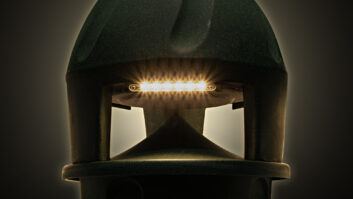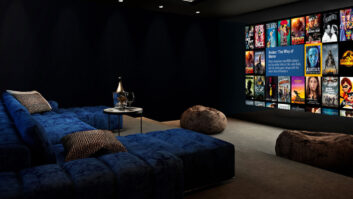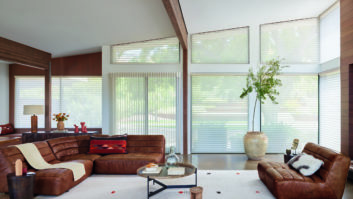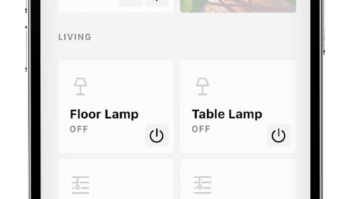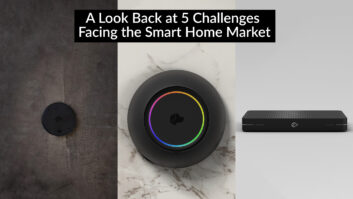Last week I read a great blog post from Gizmodo about setting up a DIY smart home. The author started out with a reasonable goal — to automate his lighting and wow his friends. The blog details how difficult the process turned out to be and how much time, effort, and frustration he wasted. I’ve run into many friends or acquaintances that try to go the DIY route, and while they are gung-ho in the beginning, they typically end up frustrated or disillusioned in the end.
Doing home automation yourself is not that dissimilar in concept from doing your own Harmony remote. The Harmony, however, is a much simpler solution than integrating lighting, shading, or door locks. First of all, the Harmony is a single-product solution; the only new thing you are adding to the system is one remote control that is purpose built to control AV components, and it doesn’t have to interact with any “unknowns.” On the other hand, home automation means that you are working with electricity, replacing locks, or measuring and hanging shades. And most people want these to all work together, so that when you get ready for bed, all it takes is one button press to lock the front door, draw the shades, and turn out the lights. But that isn’t so easy for an automation system made up of disparate parts and brands. There are now multiple unknowns in the mix.
That isn’t to say DIY doesn’t have a place. There are always going to be tinkerers and people who gain a lot of pride and satisfaction doing it themselves. But for anyone else who wants the benefits of home automation, here are the five reasons to forego the DIY route.
1) App Bloat. It’s very easy to say “there’s an app for that,” but there is often an app for each subsystem, and they don’t usually integrate together into one seamless interface. That means multiple apps and jumping from app to app to app to lock doors and shut off lights and close shades. It’s often easier to just get up and do it manually. It’s like having an app for your TV, your AVR, your Blu-ray, your cable box and your AppleTV. That’s not really any different than having five different remotes on the coffee table.
2) Complexity of Subsystems. It may be (somewhat) easy to configure once everything is connected and installed, but it’s a whole other thing to replace light switches or measure and hang shades. Unless the DIYer is going to hire an electrician to replace light switches and a shading person to do the shades and a locksmith to replace the door lock, he or she needs to learn to ply all these trades independently. And it is dangerous to work with electricity. My company doesn’t do any electrical, as we are not licensed for that. We subcontract to a licensed electrician, even if it is as simple as swapping a light switch.
3) Lack of Flexibility. If you want automated shades in the DIY arena with app control, I don’t know if there is much more available than Lutron Sivoia, or maybe something from Hunter Douglas. For lighting, most solutions are replacement light bulbs (Lutron Caseta is the exception with light switches and dimmers). The problem with relying on the light bulb for the intelligence is twofold: 1) The light switch needs to always be left in the ON position or the app won’t be able to control the lights and scenes won’t execute and 2) There is no solution for non-bulb integration (LED strips, proprietary fixtures, etc.).
4) Lack of Education. There are multiple systems out there — Insteon, Z-Wave, Wi-Fi — and many don’t talk to each other. So how are DIYers to know which products to buy and how do they sort through the confusion? And how do they know which LED bulbs to buy or if the spanking new light switch they bought will work with that really cool LED fixture or the LED strip they love in their kitchen? Expertise is required.
5) Execution Risk. Anyone of us that has done any kind of automation knows how finicky it can be sometimes, be it DIY or professional grade. When consumers try to do it themselves, this can be very frustrating. Add to that the relative youth of this category in the DIY space, with unproven companies that may go out of business or be shut down — leaving early adopters in the lurch (see Revolv) — and this can become a cash and time suck for many do-it-yourselfers.
There have really only been three big successes in the DIY space: Sonos, Nest, and Dropcam, and they are great, single-purpose products. Other than Nest, they don’t require interfacing with any subsystems or complicated wiring. And even with Nest, consumer-replaceable thermostats have been around for a very long time.
As the owner of a custom integrator business, I do appreciate the DIY products because they have opened up the conversations with my clients. Just as Sonos has done for whole home audio and Nest has done for smart thermostats, products like Wink and Hue have opened up the doors to lighting. Clients are at least familiar with the concept of home automation, and I don’t have to explain it from square one.
So while the DIY product isn’t ready for primetime, and may not be for a very long time, you can harness the awareness being generated to grow your custom install business with great, reliable solutions that your clients will be proud to show off to their friends, many of whom will be complaining about their own botched self-install jobs!
+Todd Anthony Pumais president of The Source Home Theater Installation, Powered by Fregosa Design, in New York City.

